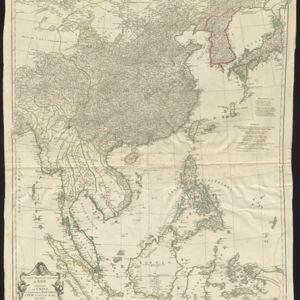
Carte Réduite des Terres Australes = Gereduceerde Kaart van 't Zuid-Land
1758
Indonesia, Papua New Guinea
New Guinea is shown connected to Australia (‘Nouvelle Hollande’) on this mid-18th century map. The title’s ‘Terres Australes’ means ‘southern lands’ indicating how Australia was named. The text is in French, with the title also in Dutch at the base.



















